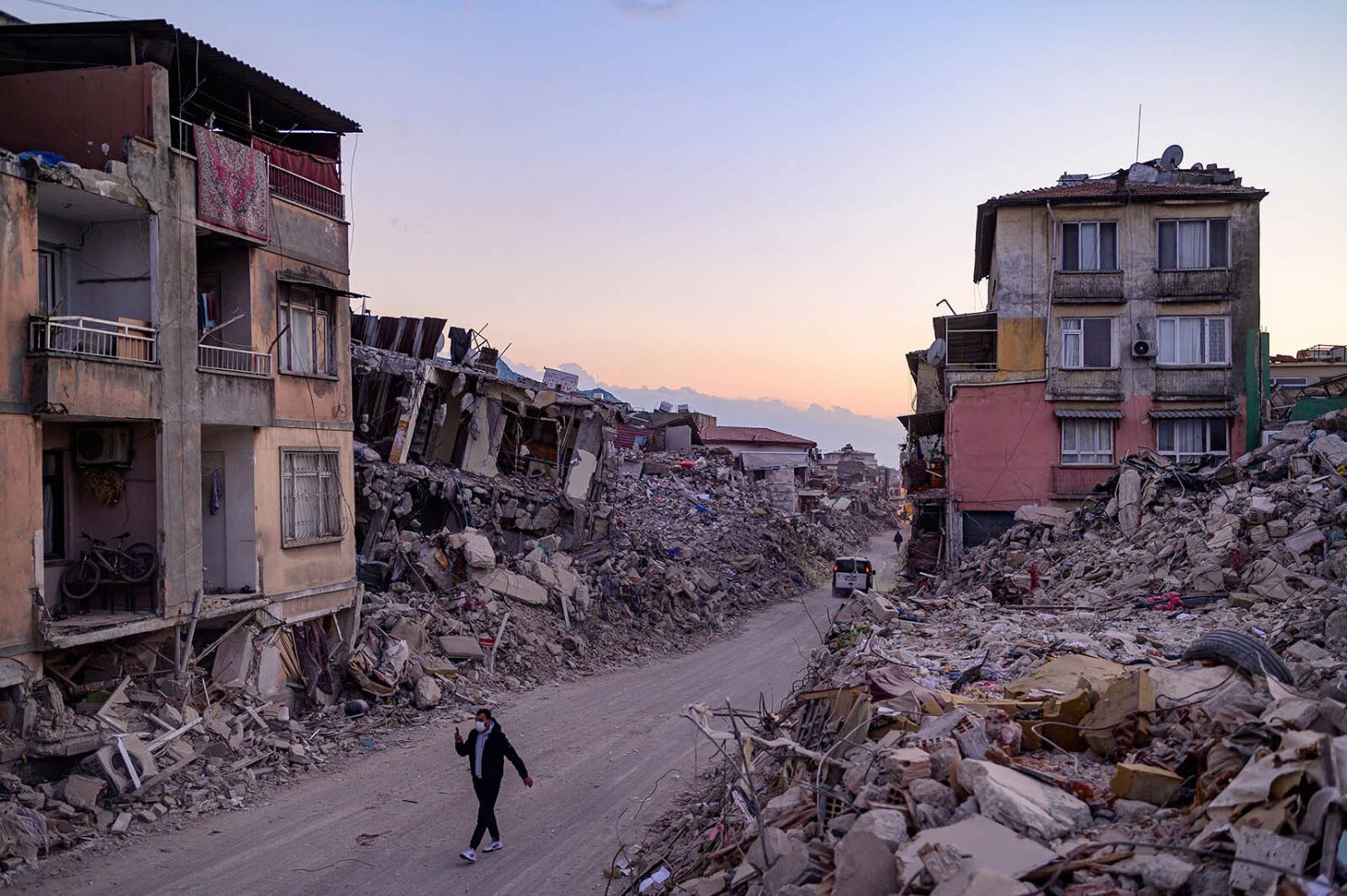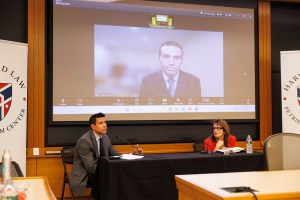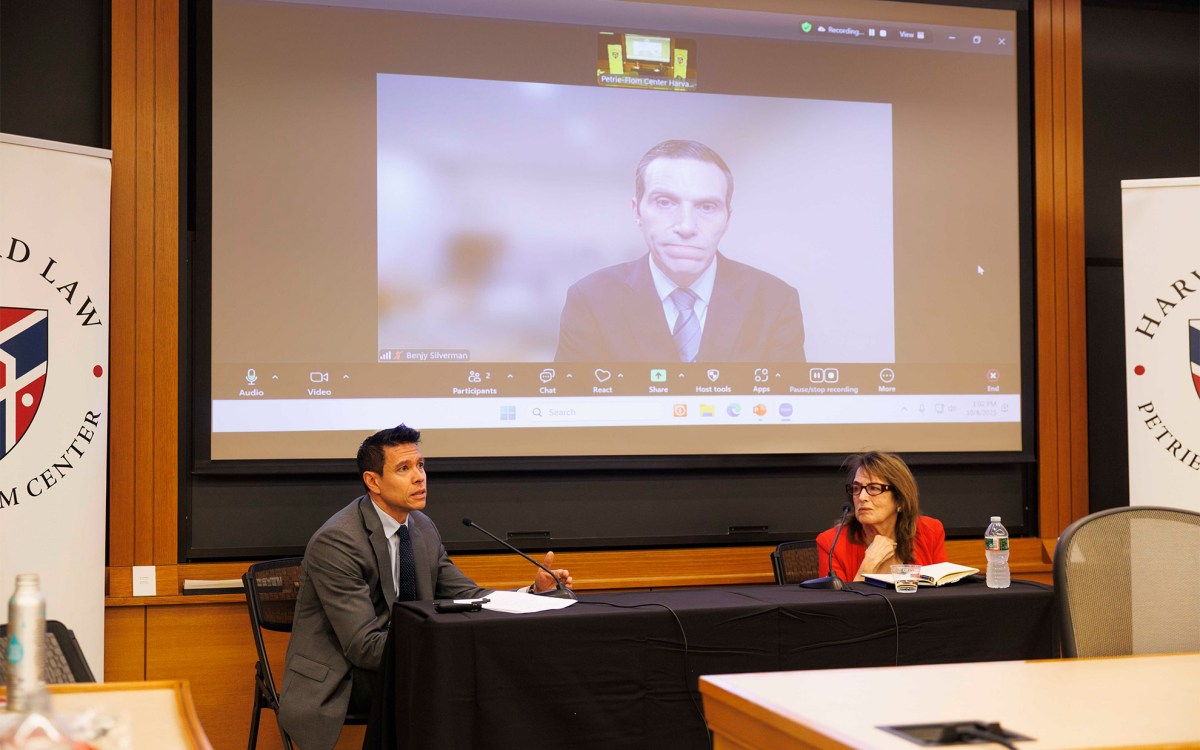Following earthquakes in Turkey and Syria, GSD design critic offers insight

A man walks past collapsed buildings in Antakya, southern Turkey on Feb. 20. Photo by Yasin Akgul/AFP via Getty Images
An excerpt from “After the Turkey-Syria Earthquakes, Rethinking Design on Shaky Ground” by Yun Fu, a design critic at Harvard Graduate School of Design.
While the recovery is still unfolding and the damage is tallied, all signs suggest that the recent earthquakes in Turkey and Syria will go down as one of the most severe natural disasters in the early 21st century. Turkey’s death toll has already passed 50,000 — rare for a country that is a member of the Organization for Economic Cooperation and Development (OECD), especially since its seismic risk was well known beforehand.
In addition to technical and regulatory failures in the building industry that the earthquakes have made viscerally evident, a broad range of political and business practices are implicated. As an architect and scholar whose work focuses on earthquakes and the broader design problem of risk, resilience, and reconstruction, I can attest that amid such mass tragedies, it is difficult but essential to find a balance between the overwhelming empathy that the individual circumstances of each disaster evoke and a rational outlook on the broader cadence and patterns of crisis and rebuilding. Borrowing a Tolstoyan sentiment, earthquakes are much the same everywhere, but each disaster is tragic in its own way.
Writing from my office in Cambridge, Massachusetts — a famously non-seismic context where the age-old building practice of putting a brick on top of another brick has worked without issue for almost 400 years — I am well aware of the cultural difference and geographic distance, and that water afar quenches no fire. Nevertheless, I offer a few thoughts for those like me, who are distant but concerned, to contemplate and perhaps draw lessons from. Some will be directly related to earthquakes and the reconstruction that follows, while others might be relevant to adjacent fields and the broader question of how to think and build on shaky ground.
An often cited aphorism about earthquakes is that people are not injured by the ground shaking, but by buildings collapsing. This straightforward observation is a stronger indictment than it may initially seem, once one understands that the technical problem of building in earthquake regions is relatively well resolved in the contemporary world, akin to polio or famine. Today, with advice from a typical engineer and working well within the technical capacity of most construction teams, it is possible to build directly on top of a fault line and be relatively confident that the inhabitants would survive an earthquake, even if the building itself sustains some damage.




